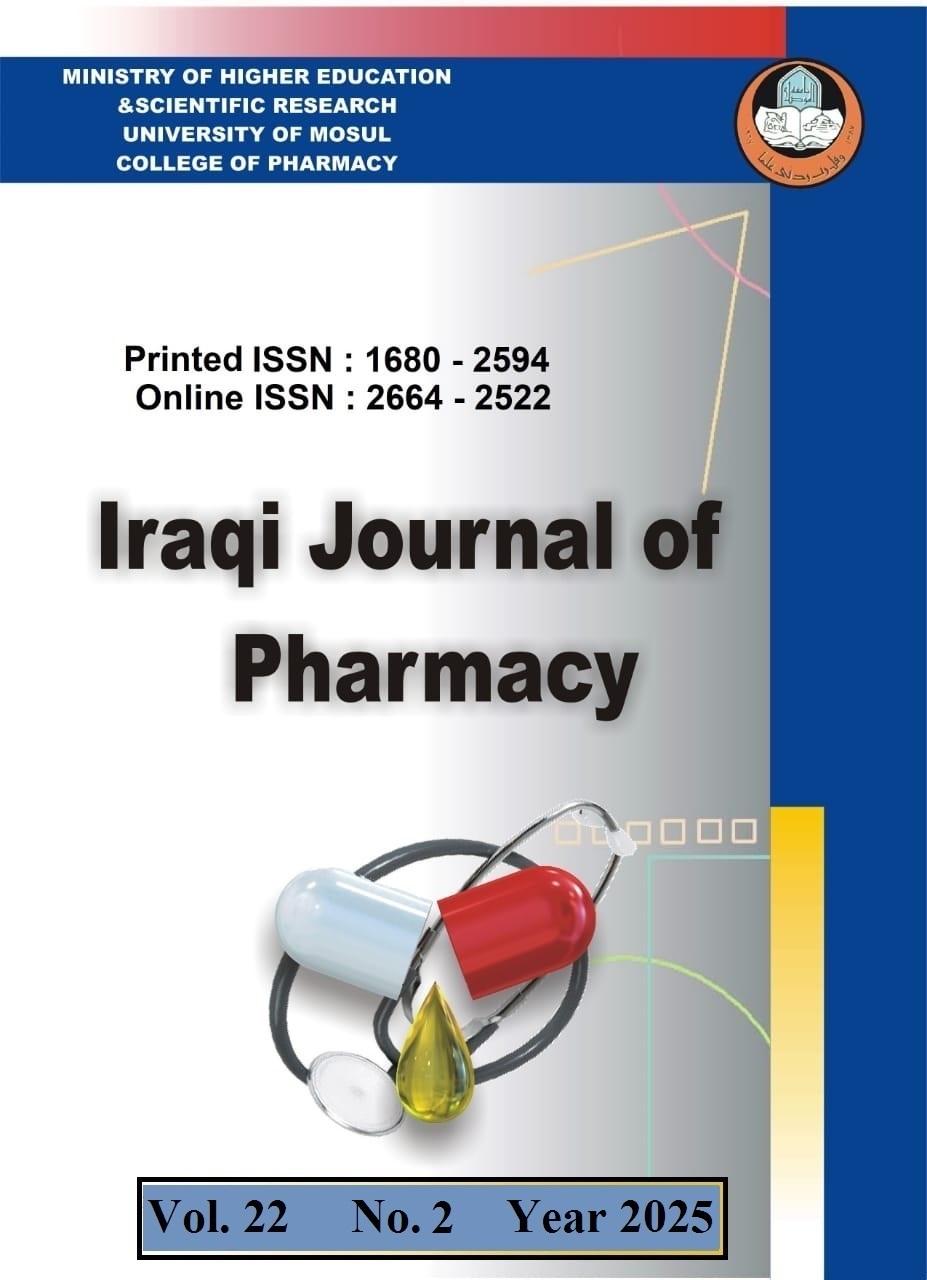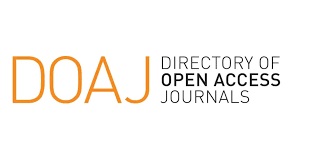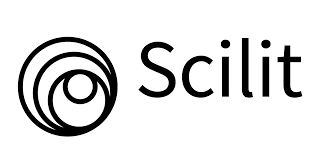Adiponectin and Total Antioxidant Capacity and Their Association with Insulin Resistance Among Women with Polycystic Ovarian Syndrome
Abstract
Background and objectives: Polycystic ovary syndrome (PCOS) is a hormonal disorder characterized by an imbalance in women's reproductive hormones within the endocrine system. PCOS is related to metabolic and endocrine disorders, including insulin resistance, glucose intolerance, obesity, diabetes mellitus, acne, and hirsutism.Obesity is common in PCOS-affected women, and it leads to abnormalities in adipocyte function and adipokine levels, including adiponectin. Adiponectin is a homeostatic regulatory agent for glucose, lipids, and insulin by its anti-inflammatory, antioxidant, and anti-fibrotic actions. It is hypothesized that the metabolic and endocrine disturbances observed in PCOS women may be related to altered adiponectin levels. Methods: Thirty-two women with PCOS under 35 years-old were enrolled in the current study, and 32 healthy women were matched for age with the previous group to evaluate adiponectin levels, total antioxidant capacity, glucose, and insulin resistance. Results: Compared with the control group, women with PCOS had significantly reduced levels of total antioxidant capacity, and adiponectin (P<0.05), with a concomitant significant increase in glucose and insulin levels and insulin resistance (P<0.0001). Interestingly, no statistically significant correlations were observed between the parameters. Conclusions: Accordingly, we concluded that lower adiponectin levels and total antioxidant capacity together with higher glucose and insulin levels and insulin resistance may offer predictive risk factors for PCOS in women who are obese with fewer PCOS symptoms.
References
- Abdollahi N, Nadjarzadeh A, Salehi-Abargouei A, Fallahzadeh H, Razmpoosh E, Lorzaedeh E, et al. The effect of Nigella sativa on TAC and MDA in obese and overweight women: secondary analysis of a crossover, double blind, randomized clinical trial. Journal of Diabetes and Metabolic Disorders. 2022;21(1):171-9.
- Almulathanon AAY, Ranucci E, Ferruti P, Garnett MC, Bosquillon C. Comparison of Gene Transfection and Cytotoxicity Mechanisms of Linear Poly(amidoamine) and Branched Poly(ethyleneimine) Polyplexes. Pharmaceutical Research. 2018;35(4):86.
- Ardawi MSM, Rouzi AA. Plasma adiponectin and insulin resistance in women with polycystic ovary syndrome. Fertility and Sterility. 2005;83(6):1708-16.
- Azziz R, Carmina E, Dewailly D, Diamanti-Kandarakis E, Escobar-Morreale HF, Futterweit W, et al. Positions statement: criteria for defining polycystic ovary syndrome as a predominantly hyperandrogenic syndrome: an Androgen Excess Society guideline. Journal of Clinical Endocrinology and Metabolism. 2006;91(11):4237-45.
- Bonora E, Targher G, Alberiche M, Bonadonna RC, Saggiani F, Zenere MB, et al. Homeostasis model assessment closely mirrors the glucose clamp technique in the assessment of insulin sensitivity: studies in subjects with various degrees of glucose tolerance and insulin sensitivity. Diabetes Care. 2000;23(1):57-63.
- Carmina E, Lobo RA. Use of fasting blood to assess the prevalence of insulin resistance in women with polycystic ovary syndrome. Fertility and Sterility. 2004;82(3):661-5.
- Dunaif A. Insulin resistance and the polycystic ovary syndrome: mechanism and implications for pathogenesis. Endocrine Reviews. 1997;18(6):774-800.
- Ezzati-Mobaser S, Malekpour-Dehkordi Z, Nourbakhsh M, Tavakoli-Yaraki M, Ahmadpour F, Golpour P, et al. The up-regulation of markers of adipose tissue fibrosis by visfatin in pre-adipocytes as well as obese children and adolescents. Cytokine. 2020;134:155193.
- Farhangi MA, Vajdi M, Fathollahi P. Dietary total antioxidant capacity (TAC), general and central obesity indices and serum lipids among adults: An updated systematic review and meta-analysis. International Journal for Vitamin and Nutrition Research. 2022;92(5-6):406-22.
- Faris ZA, El Nashar AM, Elgazzar MAE, Saad AS. Total antioxidant capacity and oxidative stress in Polycystic ovary syndrome, a case-control study. The Egyptian Journal of Fertility of Sterility. 2023;27(2):97-108.
- Fathi FH. Biomarkers of Oxidative Stress in Polycystic Ovary Disorder. Annals of the College of Medicine, Mosul. 2020;41(2):112-6.
- Fathi Z, Younus Z, Mahmood S, Mohammad J. Levels of adiponectin, malondialdehyde and lipid profile in women with polycystic ovary syndrome. ACTA Pharmaceutica Sciencia. 2024;62(1).
- Fathi ZH, Mohammad JA, Mohammed MH. Levels of Myeloperoxidase, Malondialdehyde and Lipid Profile in Type 2 Diabetic Patients on Metformin Versus Glibenclamide Therapy. Systematic Reviews in Pharmacy. 2020;11(11):1777-82.
- Fauser BC, Tarlatzis BC, Rebar RW, Legro RS, Balen AH, Lobo R, et al. Consensus on women's health aspects of polycystic ovary syndrome (PCOS): the Amsterdam ESHRE/ASRM-Sponsored 3rd PCOS Consensus Workshop Group. Fertility and Sterility. 2012;97(1):28-38.e25.
- Groth SW. Adiponectin and polycystic ovary syndrome. Biological Research for Nursing. 2010;12(1):62-72.
- Heidari H, Hajhashemy Z, Saneei P. A meta-analysis of effects of vitamin E supplementation alone and in combination with omega-3 or magnesium on polycystic ovary syndrome. Scientific Reports. 2022;12(1):19927.
- Hilali N, Vural M, Camuzcuoglu H, Camuzcuoglu A, Aksoy N. Increased prolidase activity and oxidative stress in PCOS. Clinical Endocrinology. 2013;79(1):105-10.
- Kanafchian M, Esmaeilzadeh S, Mahjoub S, Rahsepar M, Ghasemi M. Status of serum copper, magnesium, and total antioxidant capacity in patients with polycystic ovary syndrome. Biological Trace Element Research. 2020;193:111-7.
- Khan MJ, Ullah A, Basit S. Genetic Basis of Polycystic Ovary Syndrome (PCOS): Current Perspectives. The Application of Clinical Genetics. 2019;12:249-60.
- Kolesnikova L, Semenova N, Madaeva I, Suturina L, Solodova E, Grebenkina L, et al. Antioxidant status in peri- and postmenopausal women. Maturitas. 2015;81(1):83-7.
- Li W, Liu C, Yang Q, Zhou Y, Liu M, Shan H. Oxidative stress and antioxidant imbalance in ovulation disorder in patients with polycystic ovary syndrome. Frontiers in Nutrition. 2022;9:1018674.
- Manafikhi H, Drummen G, Palmery M, Peluso I. Total Antioxidant Capacity in beta-thalassemia: A systematic review and meta-analysis of case-control studies. Critical Reviews in Oncology/Hematology. 2017;110:35-42.
- Matthews DR, Hosker JP, Rudenski AS, Naylor BA, Treacher DF, Turner RC. Homeostasis model assessment: insulin resistance and beta-cell function from fasting plasma glucose and insulin concentrations in man. Diabetologia. 1985;28(7):412-9.
- Mohamadin AM, Habib FA, Elahi TF. Serum paraoxonase 1 activity and oxidant/antioxidant status in Saudi women with polycystic ovary syndrome. Pathophysiology. 2010;17(3):189-96.
- Mohammadi M. Oxidative Stress and Polycystic Ovary Syndrome: A Brief Review. International Journal of Preventive Medicine. 2019;10:86.
- Morera-Fumero AL, Daz-Mesa E, Abreu-Gonzalez P, Fernandez-Lopez L, Cejas-Mendez MD. Low levels of serum total antioxidant capacity and presence at admission and absence at discharge of a day/night change as a marker of acute paranoid schizophrenia relapse. Psychiatry Research. 2017;249:200-5.
- Murri M, LuqueRamrez M, Insenser M, OjedaOjeda M, EscobarMorreale H. Circulating markers of oxidative stress and polycystic ovary syndrome (PCOS): a systematic review and metaanalysis. Human Reproduction Update. 2013;19:268-88.
- Nguyen TMD. Adiponectin: Role in Physiology and Pathophysiology. International Journal of Preventive Medicine. 2020;11:136.
- Patil S, Veerabhadra Goud GK, Shivashankar RN, Anusuya SK, Ganesh V. Association of adiponectin levels with polycystic ovary syndrome among Indian women. Bioinformation. 2022;18(10):864-9.
- Ramanand SJ, Ghongane BB, Ramanand JB, Patwardhan MH, Ghanghas RR, Jain SS. Clinical characteristics of polycystic ovary syndrome in Indian women. Indian Journal of Endocrinology and Metabolism. 2013;17(1):138-45.
- Risi R, Tuccinardi D, Mariani S, Lubrano C, Manfrini S, Donini LM, et al. Liver disease in obesity and underweight: the two sides of the coin. A narrative review. Eating and Weight Disorders. 2021;26(7):2097-107.
- Sharma A, Welt CK. Practical Approach to Hyperandrogenism in Women. Medical Clinics of North America. 2021;105(6):1099-116.
- Silvestrini A, Meucci E, Ricerca BM, Mancini A. Total Antioxidant Capacity: Biochemical Aspects and Clinical Significance. International Journal of Molecular Sciences. 2023;24(13).
- Sirmans SM, Pate KA. Epidemiology, diagnosis, and management of polycystic ovary syndrome. Clinical Epidemiology. 2013;6:1-13.
- Smet ME, McLennan A. Rotterdam criteria, the end. Australasian Journal of Ultrasound in Medicine. 2018;21(2):59-60.
- Solmi M, Veronese N, Manzato E, Sergi G, Favaro A, Santonastaso P, et al. Oxidative stress and antioxidant levels in patients with anorexia nervosa: A systematic review and exploratory meta-analysis. International Journal of Eating Disorders. 2015;48(7):826-41.
- Vezzoli A, Gussoni M, Montorsi M, Mrakic-Sposta S. Body Mass Index and Age-Related Changes of ROS Production and Oxidative Stress Biomarkers in Healthy Subjects. Reactive Oxygen Species. 2019;8(22):21321.
- Wickham EP, Cheang KI, Clore JN, Baillargeon J-P, Nestler JE. Total and highmolecular weight adiponectin in women with the polycystic ovary syndrome. Metabolism. 2011;60(3):366-72.
- Zeng LH, Rana S, Hussain L, Asif M, Mehmood MH, Imran I, et al. Polycystic Ovary Syndrome: A Disorder of Reproductive Age, Its Pathogenesis, and a Discussion on the Emerging Role of Herbal Remedies. Frontiers in Pharmacology. 2022;13:874914.








